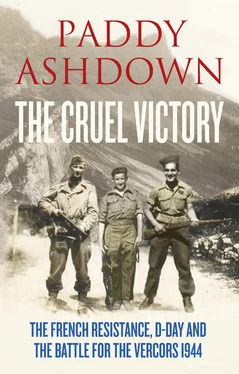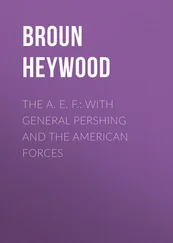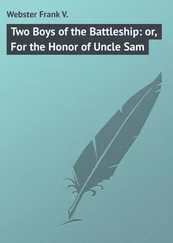The two men did not have to stand long outside the station entrance before they saw, in the light of a street lamp, a rather small man with a brisk military step displaying a most luxurious silk white handkerchief, which fluttered in the wind from his top pocket. After introductions, the old soldier led them away from the station, turning left into the main street of Bourg-en-Bresse and, 200 metres further on, passing a cake shop whose éclairs Dalloz remembered with great affection from his youth. The General stopped in front of the next-door building, a three-storey turn-of-the-century terraced town house. Here he took a step back to get a better look, as though checking he was in the right place, and then fumbled with his key for a moment in the lock of the heavy oak front door before it opened. Inside, the General lit a match to find the switch and turned the lights on. They were in a large room with closed shutters which turned out to be the offices of an insurance company. A moment later they were joined by a fourth, older man with a magnificent white moustache who introduced himself as General ‘Richard’.
In fact, the two civilians were in the presence of the two most important military officers in the hierarchy of the Secret Army in France: the man de Gaulle had charged with heading up the Resistance’s military wing, Charles Delestraint and his deputy General Desmazes. Dalloz ran through his three-page report, a copy of which he gave to Delestraint, together with an annotated map of the Vercors, a guidebook of the plateau and several supporting photographs. After asking Dalloz some searching questions, Delestraint pronounced his verdict: ‘From now on the Vercors will be part of the national military plan for liberation. From today it will be known as the Plan Montagnards.’
Two days later, on the moonlit night of 12/13 February 1943, two Lysander light aircraft from the RAF’s 161 Squadron landed in a field near Ruffey-sur-Seille in the Jura. Here they picked up Jean Moulin and Charles Delestraint, who carried a briefcase containing Dalloz’s papers, maps and photos for Plan Montagnards, and flew them back to Britain. During his stay in London, Delestraint had several meetings with de Gaulle at which he discussed his plans for the Secret Army, including in the Vercors. Afterwards, according to de Gaulle, Delestraint ‘was able to work usefully with the Allied leaders. Thereby, the operations of the Secret Army during the landing in France would be linked as closely as possible to the plans of the Allied Command.’
On 25 February 1943, just under a fortnight after Delestraint had landed in Britain, Dalloz was listening to the ‘personal’ messages for France broadcast by the BBC in its nightly programme Les Français parlent aux Français when he heard the announcer say: ‘Les montagnards doivent continuer à gravir les cimes.’ *It was the code message that Dalloz had been given by Delestraint to indicate that his proposal had been agreed by London. Plan Montagnards was to proceed as discussed.
It has always been presumed that Plan Montagnards was a purely French affair, known only to the Free French authorities in London and specifically not shared with the British, either at this stage or later. But we now know that Dalloz’s plan was in fact discussed with the British officer acting as French Regional Controller, who was directly responsible to the head of SOE, Brigadier Gubbins. A minute addressed to the Controller dated 10 April 1943 concluded that Montagnards could be ‘of appreciable value in support of an operation directed against the Mediterranean coast of France’. Noting that Dalloz’s plan ‘provides for co-operation with Allied airborne troops’, the minute makes it explicitly clear that ‘It seems extremely unlikely that such co-operation could be provided, except possibly from Africa, and it is certain that we could not promise it. We therefore feel that even if the organisation is to be encouraged they should be told … that they must expect to work on their own.’
Back in the Vercors, Dalloz immediately set about assembling a small team to help him carry out a full-scale study of the plateau. This included the head of the Department for Water and Forests on the Vercors, whom Dalloz asked to make a record of the plateau’s topography including its many caves and underground caverns, and an ex-commander of the Mountain Warfare School at Chamonix, whom he tasked with drawing up an inventory of all the huts, refuges, food resources, secret caches of arms and explosives and available vehicles on the plateau.
Dalloz, looking for a third member of his team, also sought out a young ex-Army officer whom he had not met, but had heard of as a skilled and courageous mountaineer. Alain Le Ray, who at thirty-two was Dalloz’s junior by almost ten years, was also an ex-member of a now disbanded Alpine regiment and had a number of noted Alpine climbing firsts to his credit. First captured by the Germans in 1940, he escaped, only to be recaptured and sent to the supposedly escape-proof PoW camp of Colditz Castle. But Colditz held him for only three weeks before he escaped again, this time making successful ‘home run’ back to France.
Le Ray, tall, athletic and striking to look at, was a most unusual Army officer for his time. Scrupulous about maintaining his political neutrality, meticulous in his analysis, cool in his judgements, he had, unlike most of his Army counterparts, a natural feel for irregular warfare, including an understanding of the need to make compromises in order to combine both the military and civilian elements of the French Resistance. Dalloz asked Le Ray to conduct a full-scale military study of the Vercors. Assisted by three fellow ex-officers, one of whom, Roland Costa de Beauregard, would later command a guerrilla unit on the plateau, Le Ray completed his study (see Annex B) while awaiting Delestraint’s return from London.
While Dalloz’s team were conducting their various surveys of the plateau, Dalloz and Farge were busy touring the shops in Grenoble and buying up all the available guidebooks and Michelin maps of the area. On the few days the two men were not scouring map shops they were criss-crossing the plateau in a taxi, looking for parachute and landing sites. On one such visit in early March, with the snow melting, Farge and Dalloz clambered over a forest-covered ridge to inspect one of the enclosed high mountain pastures which are a feature of the Vercors. The place was called Herbouilly and they immediately recognized it as an excellent parachute landing ground. There was only one problem. Right in the middle of the valley was a substantial, but unoccupied, farmhouse which was the property of someone suspected of being sympathetic to the Germans. Farge solved the problem by bringing in a special group of Resistants from Lyon one night to burn the place to the ground. By mid-March the two men felt they were ready for Delestraint’s return from London and the next stage of Plan Montagnards.
Elsewhere on the plateau, however, things which had started so well for Eugène Samuel and his team working with the réfractaires suffered a serious setback.
*‘The mountain men should continue to climb to the peaks.’
‘So you do not wish to go and work in Germany?’ Eugène Chavant asked abruptly, pulling his pipe out of his mouth for a moment.
‘No, M’sieu.’ The young man, no more than twenty or so, nervously twisted his beret between his fingers.
‘Who told you to contact me about this?’
‘My boss at the shoe factory, M. Blanc, told me you would be a good person to talk to, M’sieu.’
‘So you want to join the Maquis?’
‘Yes, M’sieu.’
‘Are you aware that life in the Maquis is very hard?’
Читать дальше












